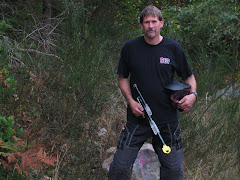The most common reason I hear that people play less paintball than they want to, or they have quit playing entirely, or their friends don’t play is that paintball is too expensive. There are other reasons, but expense is by far the most common that I hear. The reason for that of course is that paintball, for the most part, is an arms race and those not wanting to arm themselves and load up as much as the other guys feel at a disadvantage. Yes, there are those of us who go out and actually enjoy being the underdog (as far as arms go), but we are not the average player. We are more the exception to the rule. Most people do not enjoy themselves as much if they feel they are being overpowered by others with better equipment and more ammo. In order to not feel that way, you need to buck up, financially.
This is quite obvious when you look around the paintball industry and you identify the trends of the last few years (and yes it started before the recession). Tourney play is down. Tournament play is the most expensive form of paintball if you want to compete even halfway seriously. Tournaments cost money to enter and even more money to arm up for. Take into consideration the money and time commitment (time is money) needed for practices and it’s not difficult at all to see why only a small number of people can afford to take part or stick with it for any length of time.
Big game scenario paintball has increased dramatically in the last decade. Players are willing to travel great distances, shoot lots of paint and even pay a premium sometimes for that paint. Does that mean that big game scenario paintball is bucking the trend? No. Because those taking part in the big game scenario games are playing fairly rarely, for the most part. Many of the participants are only playing a few games per year. Sure they are paying hundreds of dollars per event between entry, paint, travel and other associated expenses, but if they are only doing it 2 or 3 times per year, it’s a much smaller bucket than the tourney guys need to fill, for instance. Big game scenario games are well attended, but if they were readily available every weekend at your local field, they would not be, for the simple reason that players could not afford to play these events that often.
Local recreational field play has always and will probably always be reliant on new players and those that only play a few times per year. There are fields that try to cater mostly to “regulars” but those are also the fields that have suffered the most in the last few years (and yes, more so during the recession). But there are not enough people in most areas that can afford to play every week or even every two weeks for fields to not be reliant on the new and occasional player. It’s not that these people don’t have fun playing paintball. Many of them go home ecstatic, but that doesn’t change the fact that they can’t afford to come back week after week. But it does mean that a certain amount of recreational paintball fields can exist in most areas catering to the occasional players.
The trend also means that a certain amount of big game scenario games can be held and will continue to be well attended. If however the market gets flooded with big game scenario play, not only will the separate games be less densely attended, but the overall attraction to the events will fade away. This is because many players go to these big events because they are big events. I have met several people who have gone to big events, such as D-Day for instance, who said it was a great thing to experience and they are glad they did it, but it wasn’t something they would do very often. If the numbers were to start dropping at these events, the allure would fade. It’s much like going to a popular night club. Once the novelty wears off and the crowds start to thin, they tend to thin quite quickly.
Tourney play during the late part of the last century and the early part of this century was “the” form of paintball that was going to dominate paintball participation, or so many thought at the time. Technology brought prices of gear down and mass paintball sales brought the price of ammo down. With the falling prices, how could the game not gain more and more popularity? And it did. Recreational play also increased during those times, but the focus was on tournament paintball. But of course we all know now that the dropping prices of gear and paint didn’t make the game cheaper. It just changed the game (not just in tournament play). We had markers that could shoot higher volumes of paint more reliably and paint priced such that we could do so. In the end though, a player’s pockets were just as empty at the end of the day and the next practice and/or tournament was approaching fast.
Unless a player chooses to play a form of paintball that handicaps them or plays with a group of players in a version where it has been predetermined to play with a lower volume of ammo and/or reduced technology like pump play or hopperball (which will result in lower ammo consumption), paintball will continue to be a relatively expensive past time. That’s just the reality of the situation.

